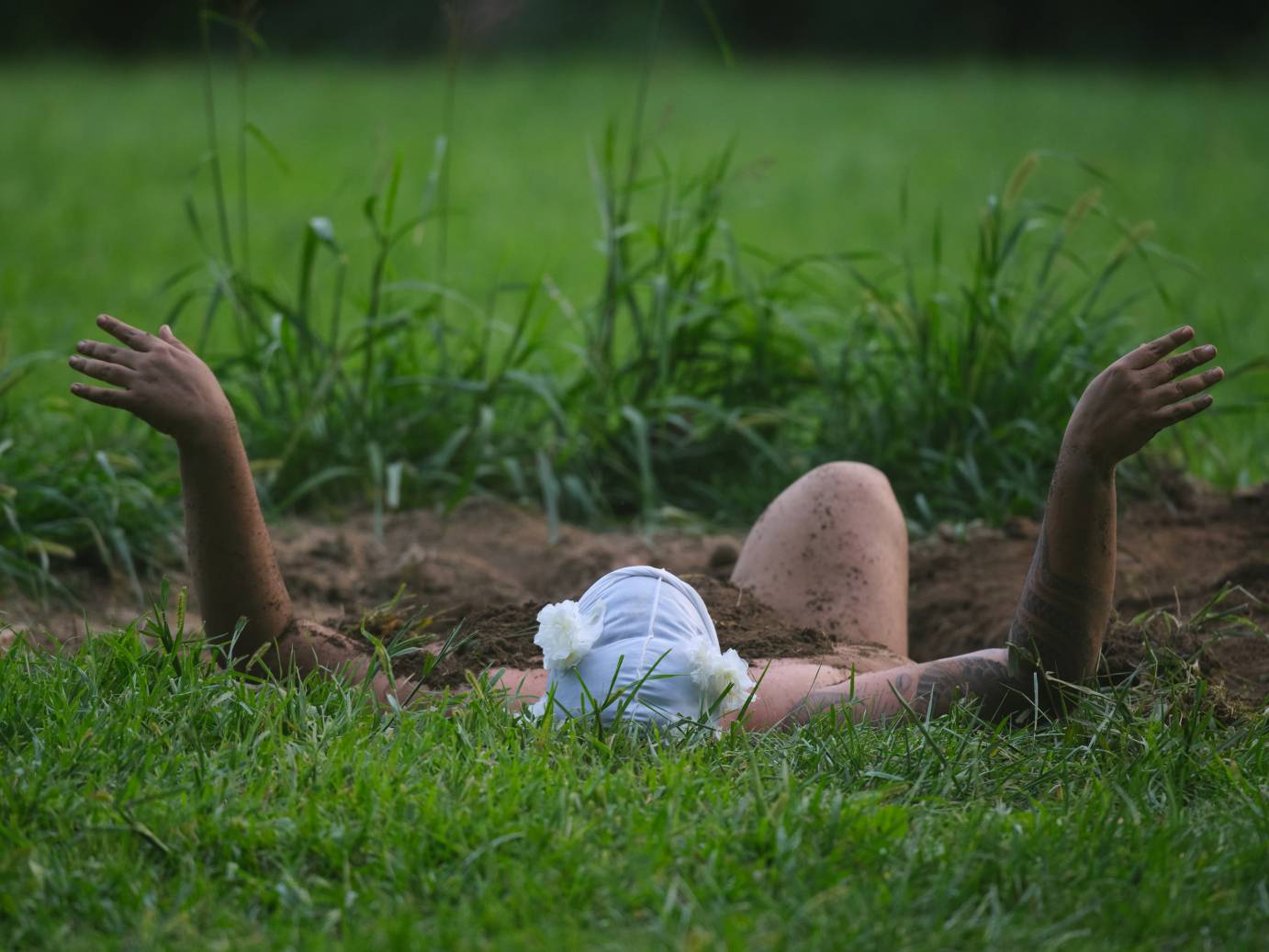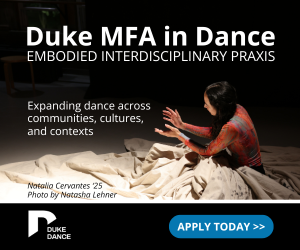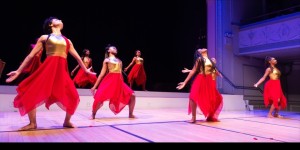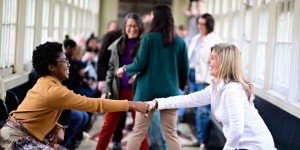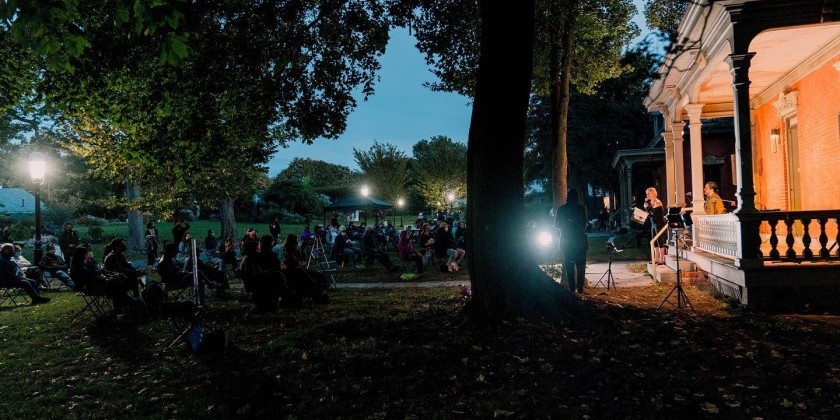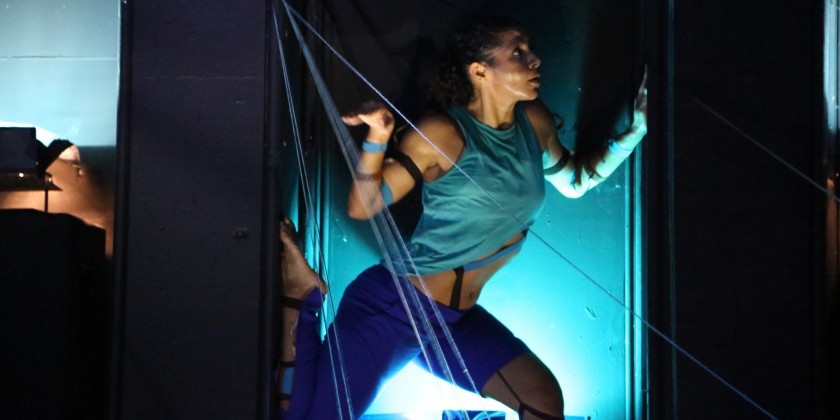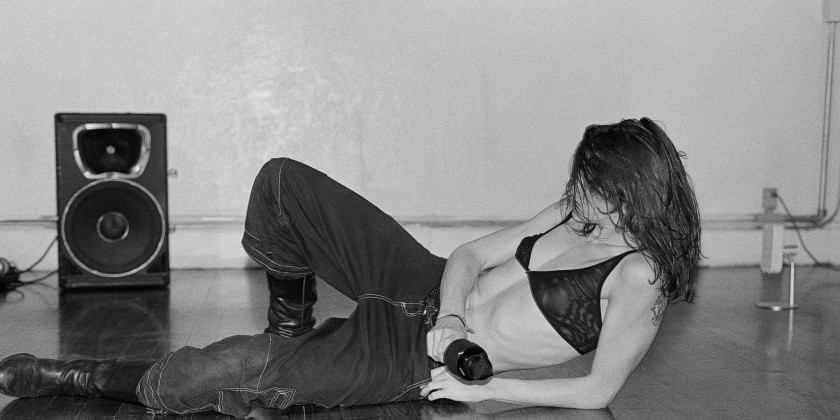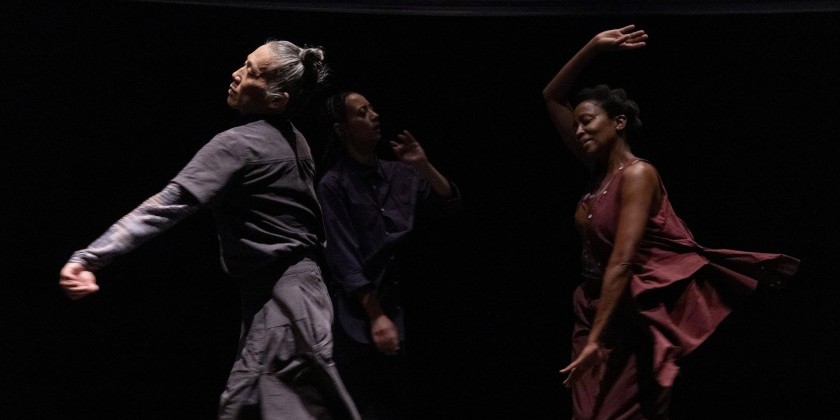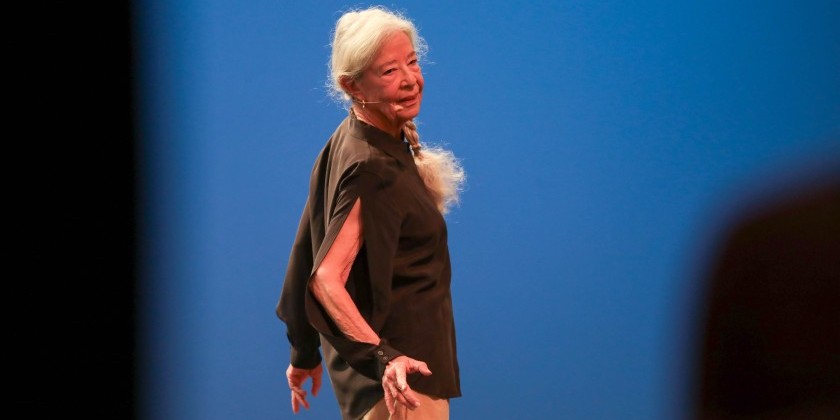THE DANCE ENTHUSIAST ASKS: RiaGrace Bauman (Formerly Maria Bauman) Speaks About Collaborating with Earth

For over two decades Maria Bauman has been a vital presence in contemporary dance, blending improvisation, ritual, and community engagement. This past summer, under her new name RiaGrace Bauman, she presented These are the bodies that have not borne from August 23-24 at Snug Harbor in New York City.
An exploration of reproductive health, fertility, and the layered emotional landscapes surrounding the question of parenthood, the work is informed by Bauman’s personal experiences with fibroids, pregnancy loss, and the ongoing process of reconciling ancestral legacies with her contemporary practice. Performed outdoors, the work integrates earth, body, and ritual, inviting dancers and audience alike to witness intimate storytelling, vulnerability, and collective reflection. Bauman’s dance work centers the non-linear and linear stories and bodies of queer people of color.
Catherine Tharin for The Dance Enthusiast: Could you please tell us about the circumstances behind your name change from Maria Bauman to RiaGrace Bauman?
RiaGrace Bauman: I look at this piece that I just made, These Are the Bodies That Have Not Borne, as a huge rite of passage. When I think about where I was when I started and where I am now, three years later, a lot has changed. It feels like an initiation in a couple of ways. One, this is the first work I’ve presented outdoors with the earth as a collaborator.
I’ve long had a dance practice where I improvise outdoors, dancing with the outdoors, but fully making a work where the earth is a collaborative collaborator was a rite of passage. I researched soil composition and the legacy of being with the land in my own family — a harmonious relationship interrupted by enslavement, complicated by sharecropping, and further complicated by moving to a big city. So, to suddenly be dancing with and inside the earth, submerging ourselves as part of the work, was a huge reckoning and calibration of that relationship.
I’ve also faced reproductive challenges that initiated this piece. I began my journey with uterine fibroids and learned how to work with them. Coaching and listening to collaborators’ stories about abortions, surgeries, fibroids, endometriosis, PCOS (polycystic ovary syndrome), pregnancy loss, and my own journey deepened my understanding of reproductive health.
By the end, it was clear to me that I have a new name. My mother called me Ria, an endearment from my given name Maria. Much in this work has to do with mother wounds (reflecting emotional and ancestral themes rather than anatomical references), healing, the umbilical cord, and legacy. Grace reflects the mentorship, support, and abundance I’ve received while making this project. Taking this name embodies both my personal and artistic journey.
What were your steps from beginning the piece to performing it three years later?
The first step was preparation I didn’t even know I needed. I deepened my faith, gratitude, and meditation practices. I went to an Akashic Records workshop, and I had a complete vision for this piece. The next step was meditating and praying on whether I wanted to bring this vision to fruition. I decided to be the steward of the work.
Then came research both literal and spiritual. I studied soil at Soulfire Farm in Grafton, NY, and visited outdoor sites from Vermont to Maine to Hudson, New York. I learned about aeration, ecosystems, and the physicality of dancing in different soils. Some locations were rocky while others were sandy or wet. Each terrain shaped how we moved. Alongside that, I researched rituals and rites of passage to structure the piece. At Snug Harbor on Staten Island, I researched Sandy Ground, one of the oldest communities of free Black people in the United States. Place learning, along with ancestral and spiritual research, guided the work. There were so many steps, but those were key.
What do the Akashic Records refer to ?
The Akashic Records are a spiritual practice accessing the energetic record of everything that has been and ever will be. I attended a workshop in Brooklyn with Alexeya where the space was set beautifully with flowers, tarot cards, candles, water, and yoga mats. I thought I’d learn about ancestors or past lives, but the vision I received felt as if the dance already existed on another plane. The choice was mine whether to bring it to this earthly plane.
%20by%20Michael%20McWeeney.%20These%20are%20the%20bodies%20that%20have%20not%20borne.%20MBDance_RiaGrace%20Bauman.%20Aug%202025.%20Snug%20Harbor.%20.jpeg)
How does your ancestry influence your work, particularly the connection to land?
My ancestry is from Jacksonville, Florida, Georgia, and Portugal, and farther back, Africa. My ancestors shrimped, farmed, picked cotton, and knew the cycles of the land. I learned whose hands peeled cotton, who was adept at farming, and what foods they grew. Reconnecting to these cycles is part of reclaiming and repairing my relationship with the earth. The more disconnected from the land I am, the more disconnected I feel from my own body.
What have you learned about fibroids and reproductive health through this piece?
Through the piece and discussions with collaborators, I learned so much. Workshops like Glorious Bodies, hosted by Brooklyn Arts Council, allowed people to share experiences. I learned about herbal supports: cerasee or bitter melon, ginger, yellow dock root, and burdock root. I also used supplements. I discovered the importance of reconnecting with the earth and Indigenous knowledge.
Fibroids disproportionately affect Black women. They are often larger and cause more complications. This disparity is under-researched. I learned the significance of comparing stories with both collaborators and public participants to understand reproductive health in a holistic, embodied way.
How do you explore intimacy in the work?
Dancing itself is intimate; our bodies are literally exposed. In rehearsals we shared personal writing prompts, such as “my birth journey” or “my womb fantasy.” Participation in celebration circles allowed dancers to invite others to focus on a part of their body, like a scar on an arm that we then look at closely. Also, sharing stories and histories, sometimes disrobed to underwear or modest coverings. We incorporated nudity to connect with the earth and embody our stories.
I learned from kink and consent practices about sexual invitation versus sexual consent. The goal was to create conditions where dancers could share intimacy on their own terms, fostering trust and community. This became a root system of the work, appearing in subtle ways throughout the performance.
What does performing outdoors add to the piece?
Performing outdoors allows the earth to be a collaborator. Dancing on different soils, under changing weather, and with natural light influences the movement and timing. The outdoors grounds us, reconnects us to cycles, and expands the sensory experience for both dancers and audience.
Any final reflections?
This work has been an initiation in every sense: spiritual, physical, ancestral, and reproductive. Naming myself RiaGrace reflects the culmination of these journeys, the grace I’ve received and offered, and the communal, embodied storytelling that underpins the piece.
